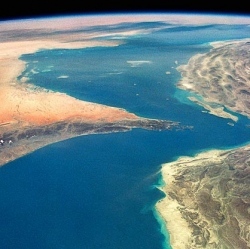
SpaceX and NASA just launched the Bigelow Expandable Activity Module. As a precursor to larger space habitat systems, Bigelow said BEAM could "change the entire dynamic for human habitation" in space. He hopes to have a pair of private space BA330 stations ready for launch by 2020.
Companies- even countries – are clamoring to put their own experiments inside the empty BEAM, Bigelow said in an interview with The Associated Press on Thursday. If everything goes well, that next commercial step could happen in perhaps six months.
Compared to their volume-mass ratio, expandable modules offer more living space than traditional rigid modules. For example, the pressurised volume of a 20-ton BA 330 module is 330 cubic meters, compared to 106 cubic meters of the 15 ton ISS Destiny module. Thus BA 330 offers 210% more habitable space, with an increase in mass of only 33%.
Bigelow also claims that the module provides radiation protection equivalent to, and ballistic protection superior to, the International Space Station.
The exterior of the craft is intended to be 13.7 meters (45 ft) long by 6.7 meters (22 ft) in diameter and the module will weigh between 20,000 kilograms (45,000 lb) and 23,000 kilograms (50,000 lb)
The BA 330 lease rate will be US$25 million for one-third of the station, 110 cubic meters (3,900 cu ft), for a 60-day lease and a round-trip taxi-seat to the BA 330 in low Earth orbit (LEO) on a SpaceX Dragon V2 will cost US$26.5 million per seat.
Bigelow announced notional designs for two enhanced BA 330s, but has explicitly stated that it would need to secure an anchor customer to go forward with building and launching any systems beyond low Earth orbit (BLEO).
The International space station has a pressurized volume of 916 cubic meters. It took about 40 launches to bring up all of the modules for assembly. Two BA330 modules would have 72% of the pressurized volume of the international space station.
The outer layers of the expandable habitat spread out and absorb energy from impacts and break up any penetrating bits of space junk. In the 1990s when NASA had Transhab technology the layers were a combination of Nextel, Kevlar, foam and other fabric formed the multilayer shield.
NASA paid Bigelow Aerospace $17.8 million for the BEAM test flight. This makes BEAM the most affordable module ever launched to the space station, said Michael Gold, director of operations and business growth for Bigelow Aerospace.
Expandable habitats like BEAM need to be just as strong – or stronger – than the standard metal cylinders that make up the current space station. BEAM has proven to be equal or better against space debris than metal, said NASA project manager Rajib Dasgupta.
Bigelow Aerospace has plans for a much larger expandable habitat B330, providing 11,654 cubic feet (330 cubic meters) of internal space, the size of a couple of buses. The company hopes to launch two of the B330s around 2020, providing opportunities for companies, schools, countries outside the space mainstream, and NASA.
